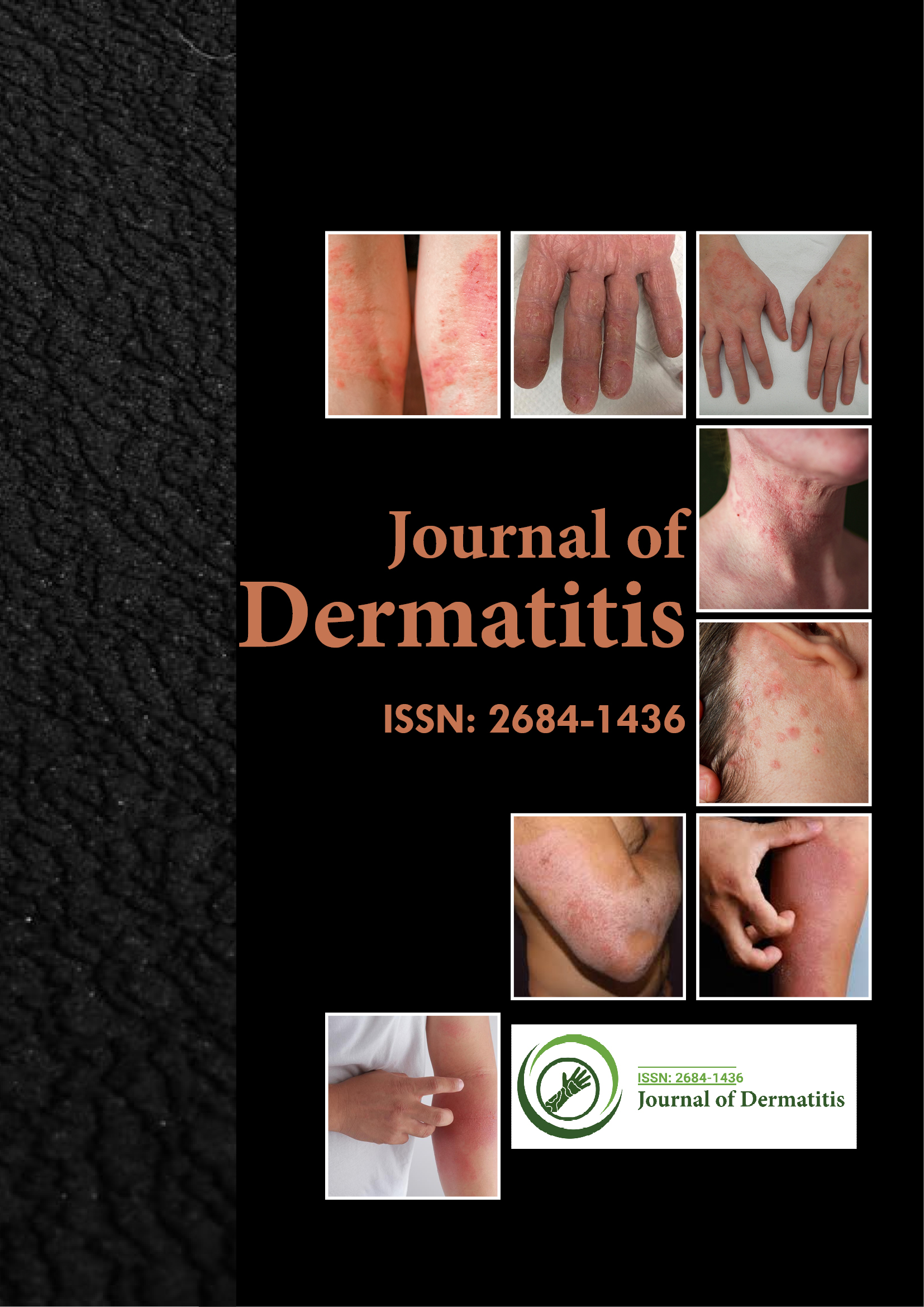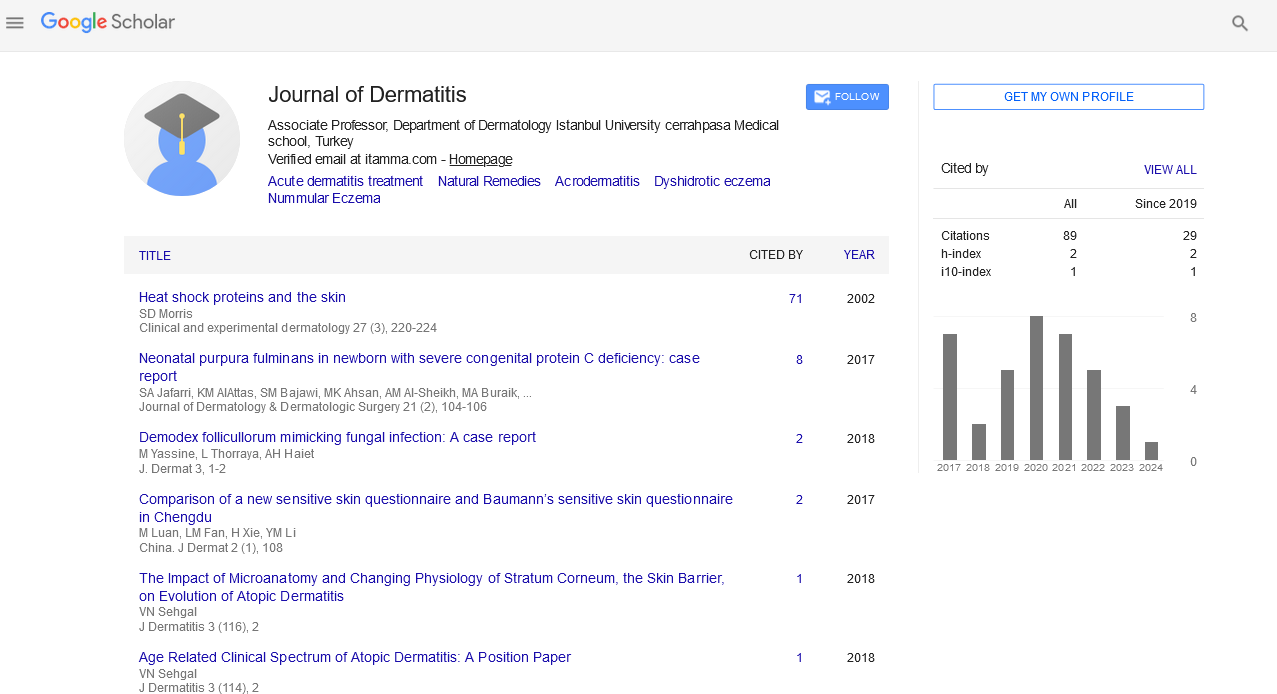Indexed In
- RefSeek
- Hamdard University
- EBSCO A-Z
- Euro Pub
- Google Scholar
Useful Links
Share This Page
Journal Flyer

Open Access Journals
- Agri and Aquaculture
- Biochemistry
- Bioinformatics & Systems Biology
- Business & Management
- Chemistry
- Clinical Sciences
- Engineering
- Food & Nutrition
- General Science
- Genetics & Molecular Biology
- Immunology & Microbiology
- Medical Sciences
- Neuroscience & Psychology
- Nursing & Health Care
- Pharmaceutical Sciences
Editorial - (2021) Volume 6, Issue 3
Amnion Wound-Applications in Wound Healing
Sehgal Jack*Received: 16-Apr-2021 Published: 07-May-2021, DOI: 10.35248/2684-1436.21.6.e116
Description
Extensive burns and full thickness skin wounds can be wrecking to patients, in any event, when treated with our present norm of care. There are an expected 500,000 consumes treated in the United States every year. Besides, in the military climate, warriors who experience the ill effects of broad consume wounds on the war zone may profit by fast medicines that bring about complete conclusion and assurance of the injuries. All things considered, there is a requirement for versatile stage advances that permit quick treatment at the site where the injury happened, or in any event at the forward working locales. This wellbeing examination of a human amnion film powder item for wound mending is a with-in persistent controlled investigation, enlisting 10 subjects going through benefactor skin unite gather. The single-focus study will incorporate patients going through giver skin collect to such an extent that two districts, of at any rate 25 cm and isolated by at any rate a 5 cm hole, of benefactor site wounds in similar skin areas, are accessible for covering with the amnion film item and the current institutional norm of care (SOC) covering. The proposed cleaned item is made out of lyophilized, gamma-lighted powder produced using amniotic film for effective application with the motivation behind upgraded wound mending.
The essential target of the investigation is to assess the security of a human amnion film item planned for improved injury mending. The auxiliary goal is adequacy as proven by complete injury conclusion comparative with standard of care (SOC) treatment in a comparable injury on a similar subject at contributor destinations made for skin joins at 14 days and 28 days postoperatively. Ongoing advances in the safeguarding and handling of amnion/chorion tissue have significantly expanded the bioavailability of these injury recuperating factors just as the timeframe of realistic usability of their connected tissue items, taking into consideration a flood in clinical use. Numerous examinations, including fundamental science, clinical preliminaries, and randomized controlled preliminaries, have arisen analysing the biologic properties of amnion/chorion film items and their viability in injury mending. Amniotic film (AM), the deepest layer of the placenta, has a fetal beginning and can without much of a stretch be isolated from the placenta by unpolished analyzation. AM, because of its unique design, organic properties and immunological attributes, is a tissue exceptionally compelling as a natural dressing. AM displays low immunogenicity and well‐documented reepithelialisation impacts. Besides AM shows anti‐inflammatory, antifibrotic, antimicrobial, pain relieving and nontumorigenic properties. This variety of its belongings is identified with its ability to blend and delivery organically dynamic particles including cytokines and flagging variables, for example, tumor putrefaction factor (TNF)‐α, changing development factor (TGF)‐α, TGF‐β, fundamental fibroblast development factor (b-FGF), epidermal development factor (EGF), keratinocyte development factor (KGF), hepatic development factor (HGF), interleukin‐4 (IL‐4), IL‐6, IL‐8, regular inhibitors of metalloproteases, β‐defensins, and prostaglandins among others.
To additionally disentangle the sub-atomic component by which AM may add to the epithelialization and wound line multiplication in ongoing post‐traumatic wounds. Investigated the relationship between TGF‐β flagging and AM guideline in injury mending utilizing keratinocytes. Strikingly, AM was equipped for constricting the TGF‐β‐induced phosphorylation of Smad2 and Smad3 in HaCaT cells. Both the strength and term of TGF‐β flagging, communicated as supported phosphorylation of Smads, are fundamental to accomplish legitimate cell reactions to TGF‐β; the inconceivability to do so creates a deficiency of the cell cycle capture in light of TGF‐β. AM lessens TGF‐β‐induced Smad2 and Smad3 phosphorylation and subsequently constricts CDKN2B (p15) and CDKN1A (p21) articulation , which has been associated with cell cycle guideline. Accordingly, the presence of AM balances the cell cycle capture initiated by TGF‐β on keratinocytes, delivering them from the limit forced by TGF‐ß. The impact of AM on TGF‐β‐regulated qualities isn't unpredictable, and not all qualities are influenced by the presence of AM. Strangely, qualities that decidedly take part in injury mending, for example, SNAI‐2 and PAI‐1 were synergistically up‐regulated by the presence of AM and TGF‐β. At long last, the declaration of c‐Jun was maximal when both TGF‐β and AM were available in either HaCaT or essential keratinocyte cells.
Citation: Jack S (2021) Amnion Wound-Applications in Wound Healing. J Dermatitis. 6:e116
Copyright: © 2021 Jack S. This is an open-access article distributed under the terms of the Creative Commons Attribution License, which permits unrestricted use, distribution, and reproduction in any medium, provided the original author and source are credited.

